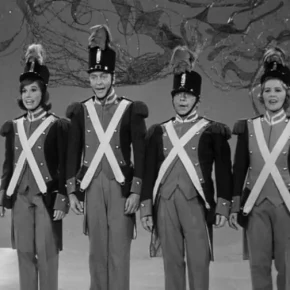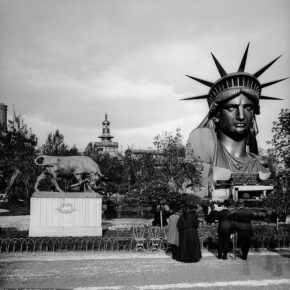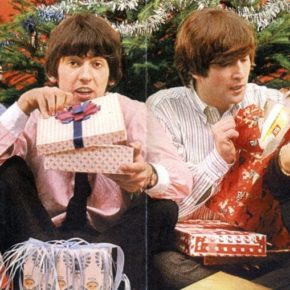While Earth Day is in its waning moments, I’d like to reflect on a dangerous and misguided addiction in the United States: we’re too in love with our cars.
Face it: most of you reading this blog use a car more often than you should. You take it a mile down the road to buy a small load of groceries, or you drive to work on the same route that a municipal bus or train takes. And your car is usually a solo-occupant machine, regardless of the size.
If you lived in Europe, chances are you wouldn’t drive as much – in fact, you may not even own a car. You use mass transit, a bike, or walk for most of your needs. And this is no surprise: heavy rail, light rail and bus networks are well-developed and well-maintained; bike lanes and parking are plentiful and available nearly everywhere; and it’s far more affordable to use the public transit or bike to get from point A to point B.
So here’s my modest proposal to all jurisdictions in the United States:
Over a three-week period:
- Raise gas (petrol) prices to a minimum of $6 per gallon for the duration of the trial period.
- Charge access tolls for major inner city areas like they do in central London.
- Increase numbers and frequency of trains on subway and light rail systems.
- Do the same for buses.
- Make transfers between mass transit systems more seamless (or free).
- On roads with two or more lanes, dedicate one lane to bicycles and buses (and enforce the rule).
Basically, it’s time that Americans got real about reshaping transportation philosophy and habits. And one of the most effective ways to do this would be to have all people who drive get a taste of how “the other half” lives. A three-week trial balloon will force most regular drivers to fill up at least once at rates that are comparable to those in Europe.
The United States fell victim to post-war gluttony – in the form of cheap gasoline, which led to sprawl, inefficient and overly-large cars, and the destruction of legacy rail lines. From the 1960s to the 1980s, entire neighborhoods were designed without sidewalks, so pervasive was the car culture. And bikes – at one time a legitimate form of transit, a utility tool – were relegated to the role of either a child’s toy or an adult’s fitness fetish item, meant to be hauled on a car to a place of recreation.
As Joni Mitchell once wrote, “you don’t know what you’ve got ’til it’s gone.”
And my guess is that people will gain a new appreciation for public transit, railways, and bicycles. And for those who find such systems inadequate for their needs, perhaps they’ll get motivated and do something to improve the situation. Local leaders in Fairfax, VA, did just that recently, and the basic fact is: local leaders can, and will, listen.
All that’s needed is for people to speak up and think outside of the petroleum-powered box.















AUA
23 April 2007 — 06:47
The size of the gas price-hike should vary proportionately to population density. I know that there are folks out in Oklahoma who *are* dependent on their various machines to accomplish their goals. For high pop-density places like DC, this is emminently feasible.
Grand Poobah
23 April 2007 — 09:20
The sliding scale argument is one that might work for me, but it’s not the case in areas where petrol prices are high.
For farmers – especially those on small, family farms – having a special price for equipment that does not leave the farm might be acceptable.
But the whole point of this is to turn society on its end and make it think before reflexively getting in the car for menial tasks – and to envision using alternate modes of transit more often. In the EU, the petrol prices don’t fluctuate too much between rural and urban zones, yet farms and whatnot seem to do just fine.
Let’s face it: you seldom hear of productivity problems in more EU nations, where the working populace either lives close to the workplace or uses mass transit to get to work. Here, the discussion is all about commute times, lost hours, and decreased productivity despite more hours spent on the clock.
adam
25 April 2007 — 13:09
I agree in principal, but in real life it’s not so simple. Sure, I could ride my bike to work – if I want to take my life in my hands on Rte. 34, or through some of the more charming parts of New Haven.
Mass transit is a nice option, but the bus service up this was isn’t quite up to snuff (i.e. mostly only down in Fairfield county, so that the RWF (rich white folk) can have the maid get to their house) nor is it especially convenient for those who want to get to work, but can’t afford the lost 2 hours of bus travel/transfer time.
I have signed up for one or two different carpool services, hoping I could do that to help out – only no-one else lives or works near me and wants a ride. That was a nice idea….
I drive the kids to school and then daycare (carpooling!) and then myself to work. On the way home, it’s usually just me. Granted, I’m driving around in an empty mini-van, but until it’s possible to transform the car into something smaller, or someone out there makes a hybrid mini-van, I don’t forsee huge numbers of people being able to make the paradigm shift needed to make this change possible.
Instead, I do other things: making sure the house doesn’t waste electricity, being careful to wash when the load to the grid is lowest, and generally making whatever effort I can to be a “green” person.